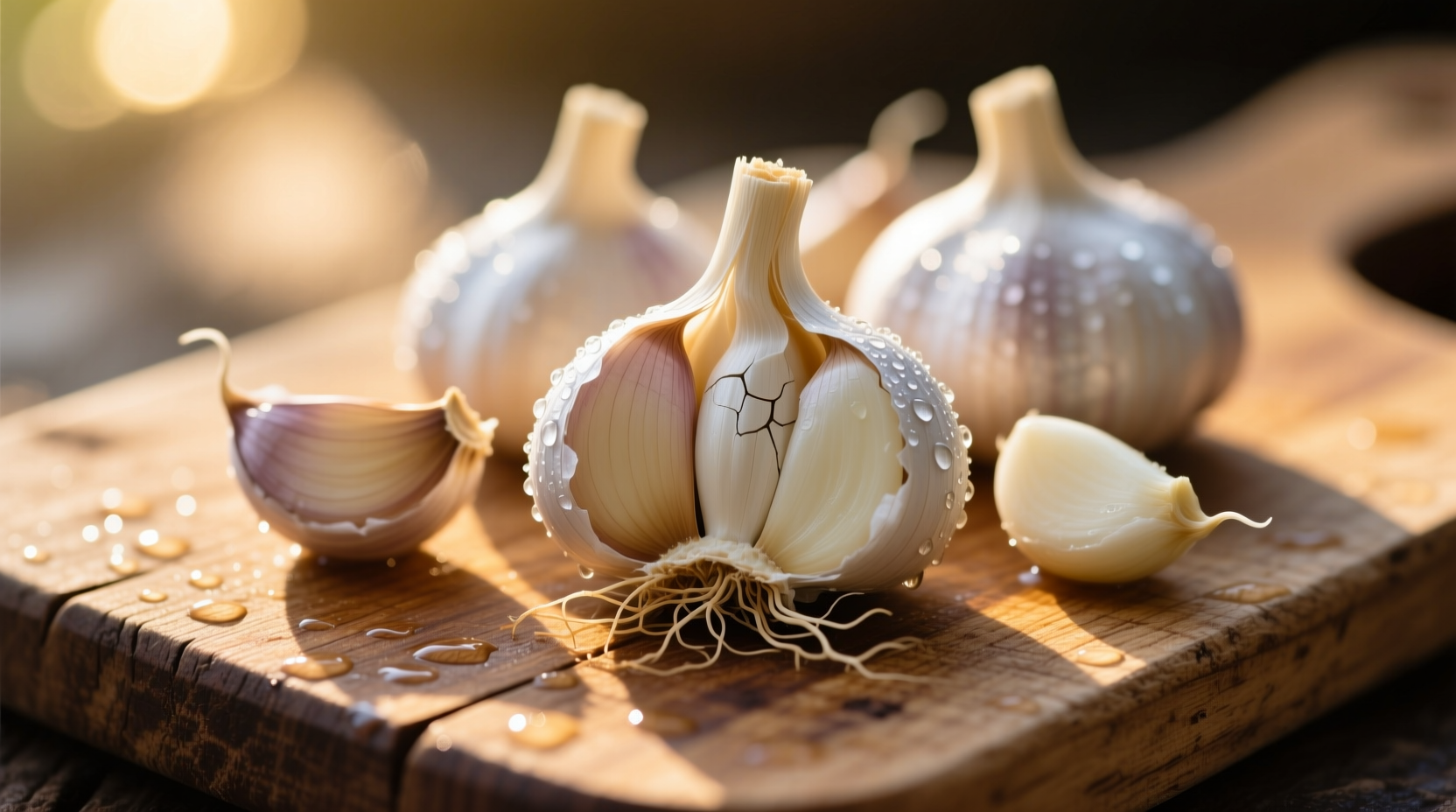The Science Behind Raw Garlic's Power
When you crush or chop raw garlic, an enzyme called alliinase converts alliin into allicin—the compound responsible for most health benefits. This reaction happens within seconds at room temperature but is destroyed by heat. According to National Institutes of Health research, raw garlic contains up to 10 times more active allicin than cooked garlic.

Top 3 Evidence-Backed Benefits of Raw Garlic
1. Cardiovascular Protection
A comprehensive American Heart Association review of 7 randomized controlled trials found raw garlic consumption reduces systolic blood pressure by 5-8 mmHg in hypertensive individuals. The mechanism involves:
- Increased nitric oxide production improving blood vessel function
- Reduction of LDL cholesterol oxidation
- Inhibition of platelet aggregation
2. Immune System Support
A 12-week clinical trial published in Clinical Nutrition showed participants taking aged garlic extract (preserving allicin compounds) had 63% fewer sick days from colds and flu. Raw garlic's antimicrobial properties work through:
- Allicin disrupting bacterial enzyme systems
- Enhanced natural killer cell activity
- Modulation of inflammatory cytokines
3. Antioxidant Protection
Raw garlic contains higher concentrations of organosulfur compounds that boost glutathione production—your body's master antioxidant. Research in the Journal of Agricultural and Food Chemistry demonstrates raw garlic increases antioxidant enzyme activity by 30% compared to cooked garlic.
| Compound | Raw Garlic (per clove) | Cooked Garlic (per clove) | Key Function |
|---|---|---|---|
| Allicin | 2.5-5.0 mg | 0.1-0.5 mg | Antimicrobial, cardiovascular support |
| Alliin | 5.0-10.0 mg | 4.0-8.0 mg | Precursor to allicin |
| S-allyl cysteine | 0.5-1.0 mg | 1.5-3.0 mg | Antioxidant, stable compound |
Practical Consumption Guidelines
Maximize benefits while minimizing discomfort with these evidence-based strategies:
Optimal Preparation Method
- Crush or chop garlic cloves
- Wait 10 minutes before consuming (allows full allicin formation)
- Pair with lemon juice or honey to reduce digestive irritation
Daily Dosage Recommendations
The European Medicines Agency recommends 2-5 grams of fresh garlic (approximately 1-2 medium cloves) daily for adults. Start with smaller amounts if new to raw garlic consumption.
Important Limitations and Considerations
Raw garlic isn't appropriate for everyone. Consider these context boundaries:
When to Avoid Raw Garlic
- Prior to surgery (increases bleeding risk)
- When taking blood thinners like warfarin
- With active stomach ulcers or GERD
- Before dental procedures
Raw vs. Cooked: Strategic Selection
Choose raw garlic when:
- You need antimicrobial effects (during cold season)
- Targeting cardiovascular benefits
- Seeking maximum antioxidant protection
Choose cooked garlic when:
- You have digestive sensitivities
- Creating long-simmered sauces or soups
- Need milder flavor profile
Historical Evolution of Garlic Use
Garlic's medicinal use spans millennia, with documented applications evolving significantly:
- Ancient Egypt (1500 BCE): Prescribed in medical papyri for 22 conditions including fatigue and parasites
- Greek/Roman Era: Hippocrates recommended raw garlic for respiratory issues and wound treatment
- Middle Ages: Used as plague preventative (though ineffective against Yersinia pestis)
- World War II: Soviet doctors used "Russian penicillin" (crushed garlic) for wound infections
- Modern Research: Focus shifted to cardiovascular and immune benefits with standardized extracts
Maximizing Benefits While Minimizing Drawbacks
Implement these practical strategies for optimal results:
- Morning consumption: Eat raw garlic 30 minutes before breakfast for maximum absorption
- Flavor masking: Mix with olive oil and herbs to create a spreadable paste
- Breath management: Chew fresh parsley or mint leaves after consumption
- Digestive protection: Take with probiotic-rich foods like yogurt











 浙公网安备
33010002000092号
浙公网安备
33010002000092号 浙B2-20120091-4
浙B2-20120091-4